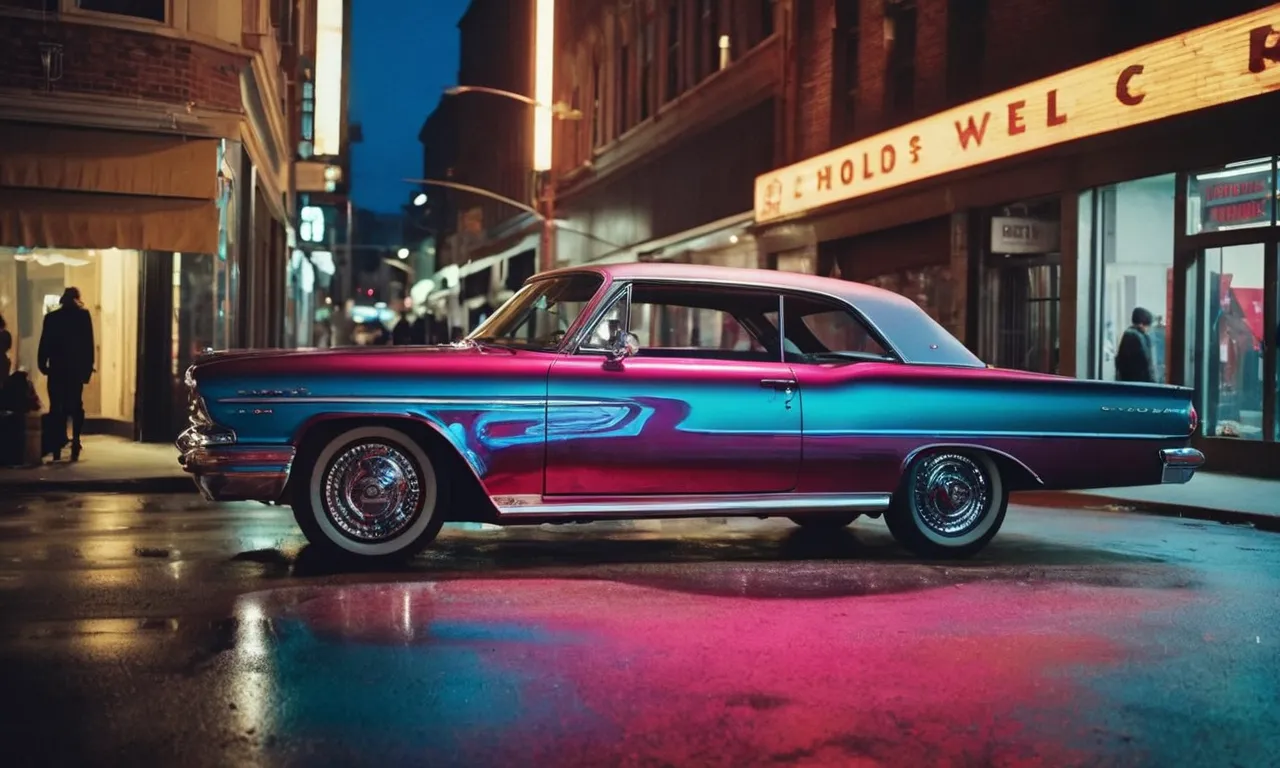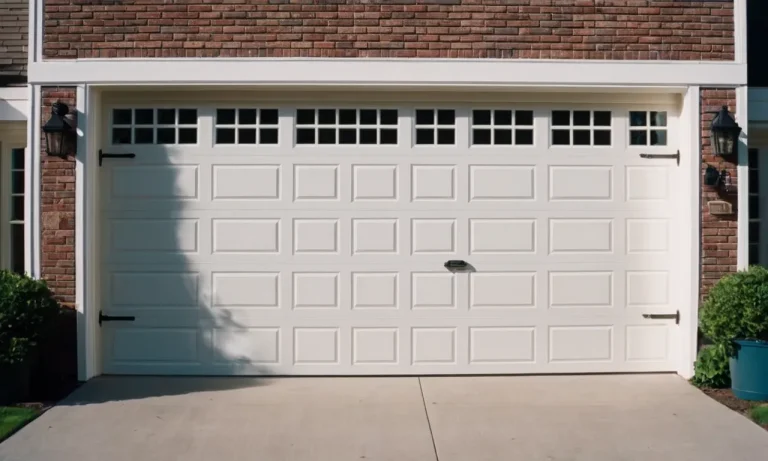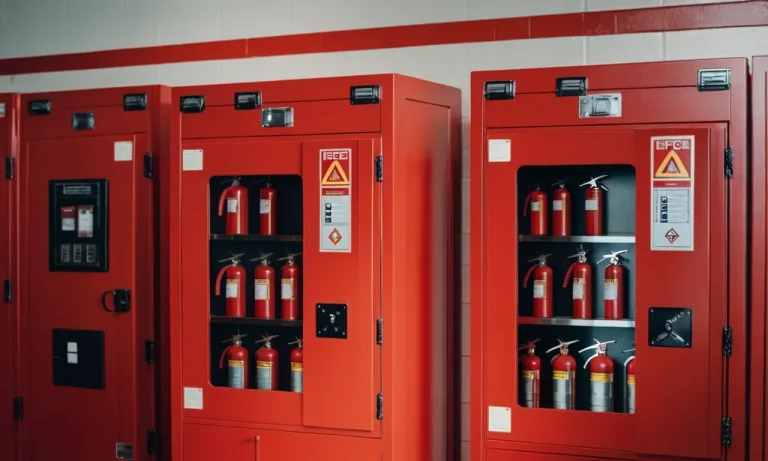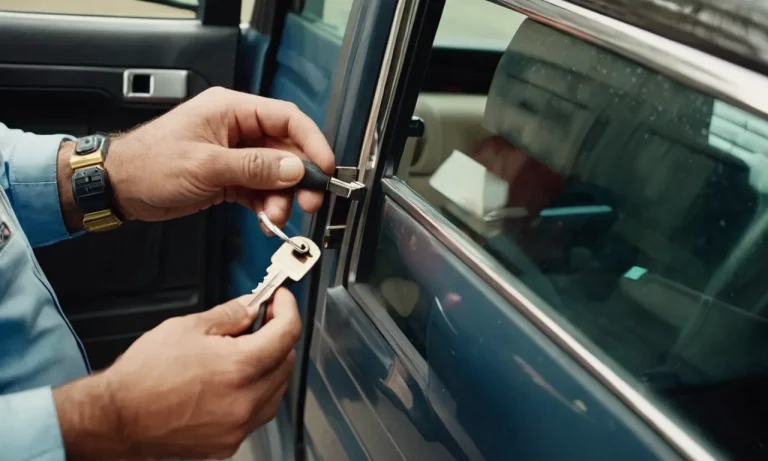Can You Spray Paint Chrome?
Chrome’s shiny metallic finish makes it stand out on vehicles and furniture. But over time, chrome can dull, chip, and rust. You may be tempted to freshen up chrome with a quick spray paint makeover. However, chrome is a challenging surface to paint.
If you’re short on time, here’s a quick answer: spraying paint directly onto chrome often results in peeling, chipping, and an uneven finish. Proper preparation is essential for the paint to adhere correctly.
This article will provide a comprehensive overview of the do’s and don’ts of spray painting chrome. We’ll discuss how to prepare chrome for painting, the best paints to use, application techniques, and maintenance tips. With the right steps, you can give dull, worn chrome a like-new shine and color.
How Paint Adheres to Chrome
Painting chrome surfaces can be a tricky task, as chrome is known for its smooth and reflective surface. However, with the right techniques and products, it is possible to achieve a durable and long-lasting paint finish on chrome.
Understanding how paint adheres to chrome is essential to ensure a successful painting project.
Chrome’s Smooth Surface
One of the biggest challenges in painting chrome is its smooth surface. Chrome has a high level of reflectivity, which makes it difficult for paint to adhere properly. The smoothness of chrome prevents paint from gripping onto the surface, resulting in poor adhesion and potential paint failure.
To overcome this issue, it is crucial to prepare the chrome surface properly before applying any paint. This typically involves thorough cleaning to remove any dirt, grease, or residue that may prevent the paint from adhering effectively.
Sanding the chrome surface lightly with fine-grit sandpaper can also help create a rougher texture, providing better adhesion for the paint.
Using Adhesion Promoters
Another effective method to enhance paint adhesion on chrome is by using adhesion promoters. Adhesion promoters are specially formulated products designed to improve the bonding between the paint and the surface, in this case, chrome.
These promoters contain chemicals that create a stronger bond between the paint and chrome, increasing the paint’s adhesion and durability.
Adhesion promoters are typically applied as a base coat before the actual paint is applied. They create a chemical reaction that helps the paint adhere to the chrome surface more effectively. It is important to follow the manufacturer’s instructions when using adhesion promoters to ensure proper application and optimal results.
While there are many adhesion promoter products available in the market, it is essential to choose one that is specifically designed for use on chrome surfaces. This will ensure that the promoter is compatible with the chrome and provides the best adhesion possible.
Remember, proper surface preparation and the use of adhesion promoters are key factors in achieving a successful paint job on chrome. It is also advisable to use high-quality paint products formulated for use on metal surfaces.
Following these guidelines will help you achieve a professional-looking paint finish on chrome.
Proper Chrome Preparation
Cleaning
Before you spray paint chrome, it is essential to clean the surface thoroughly. Chrome surfaces tend to accumulate dirt, grime, and oils, which can interfere with the adhesion of the paint. Start by wiping down the chrome with a mild detergent solution and water.
Use a soft cloth or sponge to gently scrub the surface, ensuring that all dirt and grease are removed. Rinse the chrome with clean water and pat it dry with a lint-free cloth. This step will help create a clean and smooth surface for the paint to adhere to.
Sanding
In order to improve the paint’s adhesion to chrome, sanding is necessary. Use a fine-grit sandpaper, around 220 to 400 grit, and lightly sand the chrome surface. This will help remove any remaining dirt or debris and create a rougher surface for the paint to grip onto.
Be careful not to sand too aggressively, as this can damage the chrome. After sanding, wipe the surface clean with a damp cloth to remove any sanding residue.
Applying Primer
Priming the chrome surface is crucial to ensure proper adhesion and a long-lasting finish. Choose a high-quality primer that is specifically designed for use on metal surfaces. Apply a thin and even coat of primer to the sanded chrome, following the manufacturer’s instructions.
Allow the primer to dry completely before proceeding to the next step. The primer will provide a smooth and stable base for the paint to adhere to, enhancing the overall finish and durability of the spray paint.
It is important to note that the steps mentioned above are general guidelines for preparing chrome surfaces for spray painting. Different spray paints and manufacturers may have specific instructions or recommendations, so it is always a good idea to read and follow the instructions provided with the paint you are using.
For more detailed information on spray painting chrome surfaces, you can visit websites such as www.diynetwork.com or www.familyhandyman.com. These resources offer step-by-step tutorials, tips, and insights from experts in the field.
Choosing the Right Spray Paint
When it comes to spray painting chrome, it’s important to choose the right type of spray paint for the job. Different types of spray paints have different properties, so selecting the appropriate one will ensure the best results.
Acrylic Lacquer
One option for spray painting chrome is to use acrylic lacquer. Acrylic lacquer is a type of paint that is known for its durability and high-gloss finish. It adheres well to chrome surfaces and provides a smooth, even coverage.
Additionally, acrylic lacquer dries quickly, allowing for faster project completion. It is also resistant to fading and offers excellent protection against weather conditions.
Enamel Paint
Another option to consider is enamel paint. Enamel paint is known for its durability and longevity. It is a popular choice for painting metal surfaces, including chrome. Enamel paint provides a hard, glossy finish that is resistant to chipping and peeling.
It also offers excellent color retention and can withstand exposure to harsh elements. Enamel paint is available in a wide range of colors, making it easy to find the perfect shade for your project.
Using Clear Coat
In addition to choosing the right type of spray paint, it is also important to consider using a clear coat. A clear coat is a protective layer that can be applied after the paint has dried. It adds an extra layer of protection to the painted surface, extending its lifespan and enhancing its appearance.
Clear coats are available in various finishes, including gloss, satin, and matte. Applying a clear coat can help to prevent the paint from chipping or fading over time.
Before starting any spray painting project, it is recommended to prepare the chrome surface properly. This may involve cleaning the surface to remove any dirt or grease, sanding it to create a rough texture for better paint adhesion, and applying a primer specifically designed for chrome surfaces.
Following these steps will help to ensure a successful and long-lasting spray paint finish.
For more detailed information on spray painting chrome and choosing the right spray paint, you can visit www.paintsprayerguide.com.
Spray Painting Techniques for Chrome
Chrome is a popular finish that adds a sleek and modern look to various objects, from car parts to household fixtures. However, there may come a time when you want to change the color of your chrome items.
While spray painting chrome may seem challenging, with the right techniques and preparation, you can achieve great results.
Thin Coats
When spray painting chrome, it’s important to apply thin coats of paint. This allows for better adhesion and reduces the risk of drips and runs. Start by cleaning the chrome surface thoroughly to remove any dirt or grease.
Then, lightly sand the surface to create a rough texture that will help the paint adhere. Using a high-quality primer designed for metal surfaces, apply a thin coat and let it dry completely. Repeat this process with the paint color of your choice, applying multiple thin coats until you achieve the desired coverage.
Handling Overspray
Overspray is a common issue when spray painting chrome. To avoid this, it’s important to properly mask off any areas that you don’t want to be painted. Use painter’s tape and plastic sheets to cover nearby surfaces and create a clean and defined paint area.
Additionally, consider using a spray booth or painting outdoors to minimize the risk of overspray spreading to unwanted areas. Remember to always read and follow the instructions on the paint can for the best results.
Curing Times
After you have finished spray painting chrome, it’s crucial to allow sufficient curing time. Curing time refers to the amount of time it takes for the paint to fully dry and harden. This can vary depending on the type of paint used and the environmental conditions.
It is generally recommended to let the paint cure for at least 24 hours before handling or using the painted item. This will ensure that the paint has fully bonded and is less likely to chip or peel.
Remember, spray painting chrome requires patience and attention to detail. By following these techniques, you can successfully transform the color of your chrome items and achieve a professional-looking finish.
If you’re unsure about the process or want more detailed instructions, consult reputable DIY websites like DIY Network or Family Handyman for step-by-step guides and expert advice.
Caring for Painted Chrome
Chrome is a popular choice for many car enthusiasts due to its sleek and shiny appearance. However, over time, the chrome can become scratched or dull. One way to give your chrome a fresh look is to spray paint it. But can you spray paint chrome?
The answer is yes, you can spray paint chrome, but it requires proper care and maintenance to ensure the longevity of the paint job.
Washing
When it comes to caring for painted chrome, regular washing is essential. Use a gentle car shampoo and a soft sponge or microfiber cloth to avoid scratching the paint. Avoid using abrasive cleaners or brushes that can damage the paint. Rinse thoroughly with clean water to remove any soap residue.
It is also important to dry the painted chrome properly. Water spots can form and affect the paint’s appearance if left to air dry. Use a clean, lint-free cloth to gently dry the chrome after washing. This will help maintain the shine and protect the paint from any water damage.
Touch-ups
Even with proper care, painted chrome can still get scratched or chipped over time. When this happens, it is important to address the issue promptly to prevent further damage. Touching up the paint is relatively easy and can be done at home.
Start by cleaning the area around the scratch or chip with a mild soap and water solution. Dry the area thoroughly before proceeding. Next, use a fine-grit sandpaper to sand down the damaged area gently. This will help create a smooth surface for the touch-up paint to adhere to.
Once the area is sanded, apply a primer specifically designed for chrome surfaces. This will help the paint adhere better and provide a more even finish. After the primer has dried, apply the touch-up paint using a small brush or a spray can, following the manufacturer’s instructions.
Allow the paint to dry completely before applying a clear coat for added protection.
Remember, proper care and maintenance are key to keeping your painted chrome looking great. Regular washing and addressing any scratches or chips promptly will help extend the life of the paint job. So go ahead and give your chrome a fresh new look with a spray paint, and enjoy the head-turning results!
Conclusion
With proper preparation and technique, you can achieve great results spray painting chrome. Sanding and cleaning are essential first steps to help the paint adhere. Acrylic lacquer or enamel paints specifically formulated for metals will hold up best.
Applying thin coats of paint and clear coat allows for a smooth, even finish. Caring for painted chrome by washing gently and applying touch-up paint can maintain the refreshed look.
Spray painting chrome takes some work, but following these tips will help the paint adhere tightly for a durable, quality finish. Be patient during the preparation steps and paint application, and you can revive worn chrome with a fresh spray painted look.







